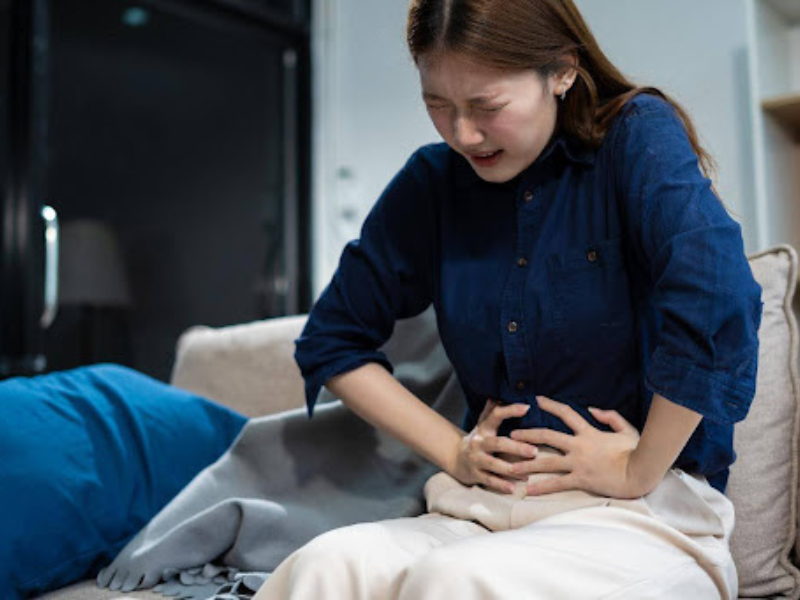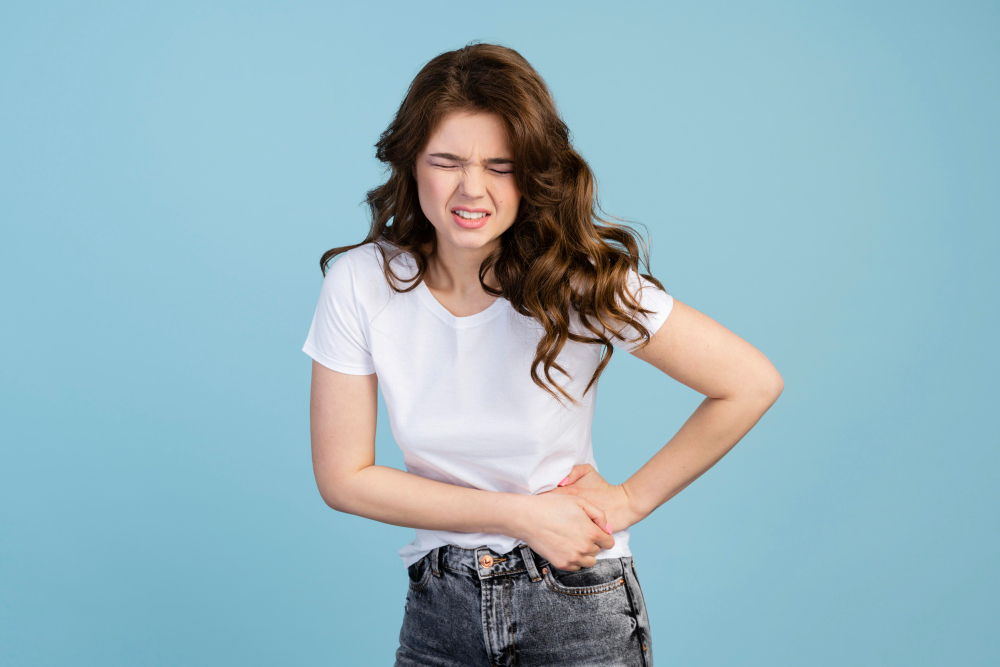
The Connection Between Menopause and Bladder Health
Menopause, is a profound transition in a woman’s life, signaling the end of her reproductive years and bringing with it a cascade of hormonal changes. The symptoms like hot flashes, mood swings, night sweats, and hypertension are the pioneers when perimenopause triggers and that’s why they are more prevalent and pronounced.
Bladder problems, despite their prevalence, often remain shrouded in silence as their onset is delayed and till then, women become resilient to all such symptoms. Yet, for many women, bladder issues can be more challenging aspects of menopause that significantly affect their quality of life.
Here, we will try to understand the root cause of urological concerns at menopause along with the effective strategies for its management so that women can navigate this new phase of life with more confidence and resilience.
Menopause and Bladder: A Delicate Balance Disrupted
At the heart of bladder problems during menopause lies the body’s diminishing production of estrogen. This hormone is essential for many bodily functions and plays a critical role in maintaining the integrity and health of the tissues in the urinary tract, including the bladder and urethra. As estrogen levels decline, these tissues can become thinner, less elastic, and more prone to infection.

Moreover, due to insufficient estrogen levels, the pelvic floor muscles providing structural support to the bladder, may weaken over time. This weakening, combined with the overall decline in tissue health, leads to a variety of urological challenges that many menopausal women face.
How Declined Estrogen at Menopause Triggers Bladder Issues?
Insufficient estrogen at menopause compromises the whole urinary system:
- Thinning of Urinary Tract Tissues: Estrogen enhances the blood flow to the urinary tract tissues which ensures that the bladder and urethra receive adequate nutrients and oxygen. As estrogen production wanes, the blood supply to the urinary tract diminishes, leading to thinning and weakening of tissues and resulting in dryness, irritation, and increased risk of infection.
- Compromised Elasticity: Collagen, a protein that provides structure and elasticity to various tissues, including the urinary tract. Estrogen helps maintain collagen levels in the bladder and urethral wall, allowing them to remain flexible and strong. At menopause, declined estrogen levels make the bladder tissue less elastic and more prone to stress and injury.
- Pelvic Floor Muscle Weakness: Pelvic floor muscles are a group of muscles located at the base of the pelvis. They have a role in supporting the organs in the pelvic region including the bladder and controlling the release of urine. As the woman ages, these muscles loosen and lose strength, leading to issues such as urinary incontinence (difficulty in fully emptying the bladder).
- Bladder Muscle Instability: Estrogen deficiency affects the bladder muscles and leads to overactive bladder, a condition characterized by sudden and uncontrollable urges to urinate.
What Bladder Problems Can Be Expected At Menopause?
Bladder issues during menopause are being more experienced than expressed and therefore, recognizing the symptoms can help women manage them effectively. The most prevalent bladder problems during menopause include:
- Increased Urinary Frequency: Many menopausal women experience the need to urinate more frequently than often. This is due to decreased elasticity of the bladder, which reduces its ability to hold urine for long periods.
- Urinary Urgency: It is a sudden and intense urge to urinate because of the rigid bladder. It is an intense feeling of dashing to the bathroom even if the bladder is not full.
- Urinary Incontinence: It refers to an involuntary leakage of urine common in menopausal women at older age, due to weakened pelvic floor muscles or sphincter muscles controlling the bladder opening. There are a few types of urinary incontinence reported:
- Stress Continence: It is the leakage of urine due to physical pressure on the bladder. The activities such as coughing, sneezing, laughing, exercising lifting, etc.
- Urge Incontinence: Characterized by a sudden and intense urge to urinate, followed by involuntary leakage.
- Overflow Incontinence: It occurs when the bladder does not empty during peeing, causing frequent dribbling. This condition is often associated with bladder damage, and nerve conditions and is more common in men with enlarged prostate.
- Infections: Insufficient estrogen levels during menopause cause the alteration of pH in the vagina and urinary tract. It results in an increased risk of urinary tract infections (UTIs).
- Nocturia: When there is a compromised bladder in menopausal women, they often experience waking up several times during the night to urinate. This is enough to significantly disrupt sleep and feel fatigued during the day.
Long-term Effect of Menopause on Bladder: The Exaggerated Symptoms
While bladder problems during menopause are common, these issues often worsen as the age increases with menopause. It is attributed to the decreased estrogen levels which induces a long-term impact on the bladder. Such exaggerated forms of bladder problems are:
- Overactive Bladder (OAB): It is a broader syndrome that involves a set of symptoms related to bladder dysfunction. The most notable symptom is a frequent and urgent need to urinate. Women with AOB are reported to have a constant feeling of being near a bathroom, making their daily routine more stressful. Essentially, urge continence is one potential outcome of having an overactive bladder, but not everyone with AOB will experience incontinence or leakage.
- Pelvic Organ Prolapse: With increasing age, the muscles and ligaments that support the pelvic organs, including the bladder, get weakened. This weakening causes the bladder or other pelvic organs to descend from their normal position and push into or out of the vaginal canal, a condition known as pelvic organ prolapse. While this condition is not limited to menopause, however, the risk increases after menopause due to the loss of muscle tone in the pelvic region.
- Recurrent UTIs: Bladder problems after menopause often include recurrent UTIs. With less estrogen in the body, the protective lining of the urinary tract becomes more fragile, making it easier for bacteria to enter the bladder and cause recurrent UTIs. The infection comes with a lot of itching, pain, and frustration, leading to further complications if left untreated.
Strategies to Overcome Menopause Bladder Issues
To take charge of your bladder health at menopause, there are many strategies and treatment regimens available to make menopause happy and improve quality of life.

Let’s have an eye for the solutions.
- Lifestyle Modification: Making or changing a tiny habit can greatly reduce the severity of bladder issues at menopause. Such lifestyle modification includes:
- Drink plenty of water: Drinking enough water throughout the day is helpful in reducing bladder irritation, preventing infections, supporting pelvic floor functions, and improving overall bladder control. Avoid excessive fluid intake, especially before bed.
- Limit Irritants: Caffeine, alcohol, and spicy foods are bladder irritants that exacerbate bladder problems, therefore, cut back on such irritants.
- Follow a Healthy Diet: Having a balanced diet rich in fiber can help prevent constipation, which can worsen bladder problems by putting pressure on the bladder.
- Daily Exercises: Doing exercises specifically to strengthen the pelvic floor muscles can help manage stress incontinence. Doing so can improve muscle tone, giving you better control over bladder leakage.
- Maintain a Healthy Weight: Excess body weight can put additional pressure on the bladder and pelvic floor muscles, worsening incontinence symptoms. Maintaining a healthy weight through exercise and a healthy diet can alleviate some of the symptoms.
- Bladder Training: It consists of techniques that gradually increase the time between bathroom visits, helping you regain control over your bladder. By following a schedule and practicing timed voiding, you can train your bladder to hold urine for longer periods, reducing the frequency and urgency of urination.
- Hormone Replacement Therapy (HRT): It is one of the most effective treatment regimens for managing menopausal bladder issues. Giving estrogens from external sources helps restore estrogen levels, which in turn improves the health of the bladder tissues. This ultimately reduces urinary frequency, urgency, incontinence, and UTIs. What is worth mentioning here is that HRT is available in different forms like oral tablets, skin patches, injections, and vaginal estrogen therapy. While tablets and injections have systemic effects, vaginal estrogen therapy specifically targets tissues of the urinary and genital tract, offering relief with fewer systemic side effects.
- Medications: Drugs such as anticholinergics and Beta-3 agonists are being prescribed by medical practitioners usually to get rid of an overactive bladder by relaxing the bladder muscles, and reducing urinary urgency and frequency. Always consult with your healthcare provider before starting any new medication or treatment.
- Surgical Procedures: In severe cases of incontinence or pelvic organ prolapse that are not responding to conservative treatments, surgical removal of that organ is an option. Procedures such as bladder sling surgery or vaginal mesh implants can provide long-term relief from bladder problems.
Final Takeaway
Bladder problems during menopause are common, but they don’t have to be endured in silence. The hormonal changes during menopause lead to a variety of urological issues like urinary incontinence, overactive bladder, and recurrent UTIs.
Many women feel uncomfortable discussing these issues, but open communication with a healthcare provider is essential for finding the right treatment plan including just a lifestyle modification, some pelvic exercises, systemic or local hormonal therapy, and medical or surgical interventions.
Remember that bladder problems during menopause are not something to be embarrassed about. Seeking help and taking proactive steps is a self-help in standing tall, and managing health and well-being during this transformative phase of life.
Citations
- https://www.mymenopausecentre.com/symptoms/bladder-symptoms/
- https://urogyn.coloradowomenshealth.com/conditions/bladder/menopause-urinary-symptoms.html
- https://www.bladderandbowel.org/news/menopause-and-the-bladder/
- https://wellfemme.com.au/bladder-problems-at-menopause/
- https://pmc.ncbi.nlm.nih.gov/articles/PMC4876519/

Poonam Rawat




